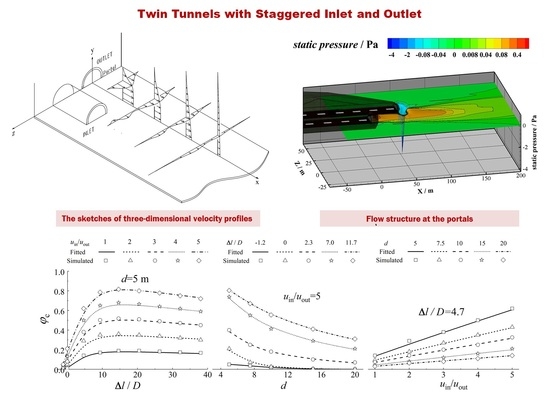Numerical Research on the Mixture Mechanism of Polluted and Fresh Air at the Staggered Tunnel Portals
Abstract
:1. Introduction
2. Mathematical Model
2.1. Governing Equations and Numerical Algorithm
2.2. Computational Geometry, Domain, and Grid
2.3. Grid Dependence Study
2.4. Boundary Conditions
2.5. Validation
3. Numerical Simulation Results and Discussions
3.1. Flow Characteristic
3.2. Variation Characteristics of Circulating Air Mixing Ratio
3.2.1. The Relationship between Circulating Air Mixing Ratio and the Air Velocity at the Inlet/Outlet
3.2.2. The Relationship between Circulating Air Mixing Ratio and Tunnel Structure Parameters
3.3. Construction and Validation of Circulating Air Mixing Ratio Model
4. Conclusions
Author Contributions
Funding
Conflicts of Interest
References
- Du, T.; Yang, D.; Peng, S.; Xiao, Y. A method for design of smoke control of urban traffic link tunnel (UTLT) using longitudinal ventilation. Tunn. Undergr. Space Technol. 2015, 48, 35–42. [Google Scholar] [CrossRef]
- El-Fadel, M.; Hashisho, Z. Vehicular emissions and air quality assessment in roadway tunnels: The Salim Slam tunnel. Transp. Res. Part D 2000, 5, 355–372. [Google Scholar] [CrossRef]
- Li, Q.; Chen, C.; Deng, Y.; Li, J.; Xie, G.; Li, Y.; Hu, Q. Influence of traffic force on pollutant dispersion of CO, NO and particle matter (PM 2.5) measured in an urban tunnel in Changsha, China. Tunn. Undergr. Space Technol. 2015, 49, 400–407. [Google Scholar] [CrossRef]
- Raaschou-nielsen, O.; Andersen, Z.J.; Jensen, S.S.; Ketzel, M.; Sorensen, M.; Hansen, J.; Loft, S.; Tjonne, A.; Overvad, K. Traffic air pollution and mortality from cardiovascular disease and all causes: A Danish cohort study. Environ. Health 2012, 11, 60. [Google Scholar] [CrossRef] [PubMed]
- Hoek, G.; Krishnan, R.M.; Beelen, R.; Peters, A.; Ostro, B.; Brunekreef, B.; Kaufman, J.D. Long-term air pollution exposure and cardio-respiratory mortality. Environ. Health 2016, 12, 43. [Google Scholar] [CrossRef] [PubMed]
- Król, A.; Król, M. Study on hot gases flow in case of fire in a road tunnel. Energies 2018, 11, 590. [Google Scholar] [CrossRef]
- Vega, M.G.; Diaz, K.M.A.; Oro, J.M.F.; Tajadura, R.B.T.; Morros, C.S. Numerical 3D simulation of a longitudinal ventilation system: Memorial Tunnel case. Tunn. Undergr. Space Technol. 2008, 23, 539–551. [Google Scholar] [CrossRef]
- Maele, K.V.; Merci, B. Application of RANS and LES field simulations to predict the critical ventilation velocity in longitudinally ventilated horizontal tunnels. Fire Saf. J. 2008, 43, 598–609. [Google Scholar] [CrossRef]
- Moosavi, E.; Shirinabadi, R.; Rahimi, E.; Gholinejad, M. Numerical modeling of ground movement due to twin tunnel structure of esfahan subway. Iran. J. Min. Sci. 2018, 53, 663–675. [Google Scholar] [CrossRef]
- Wu, C.S.; Li, J.X.; Chen, X.; Xu, Z.P. Blasting in twin tunnels with small spacing and its vibration control. Tunn. Undergr. Space Technol. 2004, 19, 518. [Google Scholar] [CrossRef]
- Miao, S.J.; Fu, D.F. Case study of nanjing inner ring on air pollution dispersion from roadway tunnel portals. Adv. Mater. Res. 2013, 610–613, 1895–1900. [Google Scholar] [CrossRef]
- Chen, W.; Guo, X.; Cao, C.; Dai, Y.; Wu, G.; Tan, X.; Yang, J.; Jia, S.; Yu, H.; Li, F. Research on interrelationship of exhaust air of highway forked tunnel and countermeasures. Chin. J. Rock Mech. Eng. 2008, 27, 1137–1147. [Google Scholar] [CrossRef]
- Tan, X.; Chen, W.; Dai, Y.; Wua, G.; Yang, J.; Jia, S.; Yu, H.; Li, F. Experimental research on the mixture mechanism of polluted and fresh air at the portal of small-space road tunnels. Tunn. Undergr. Space Technol. 2015, 50, 118–128. [Google Scholar] [CrossRef]
- Yang, Y.; He, C.; Zeng, Y. Numerical simulation for the pollution effect between portals of twin highway tunnels. Mod. Tunn. Technol. 2009, 46, 94–98. [Google Scholar] [CrossRef]
- Li, H.; Wang, X.; Zhou, H.; Chang, B.; You, H. Numerical analysis and countermeasures for air cross pollution at the outlets of closely-spaced tunnels. Mod. Tunn. Technol. 2009, 46, 58–63. [Google Scholar] [CrossRef]
- Launder, B.E.; Spalding, D.B. The numerical computation of turbulent flows. Comput. Methords Appl. Mech. Eng. 1974, 3, 269–289. [Google Scholar] [CrossRef]
- Versteeg, H.K.; Malalasekera, W. An Introduction to Computational Fluid Dynamics: The Finite Volume Method, 2nd ed.; Pearson Education: London, UK, 2007; pp. 186–190. [Google Scholar]
- An, X.; Song, B.; Tian, W.; Ma, C. Design and CFD simulations of a vortex-induced piezoelectric energy converter (VIPEC) for underwater environment. Energies 2018, 11, 330. [Google Scholar] [CrossRef]
- Patankar, S.V. Numerical Heat Transfer and Fluid Flow, 1st ed.; Hemisphere Pub. Corp.: New York, NY, USA, 1980; pp. 33–35. [Google Scholar]
- Hong, S.W.; Exadaktylos, V.; Lee, I.B.; Amon, T.; Youssef, A.; Norton, T.; Berckmans, D. Validation of an open source CFD code to simulate natural ventilation for agricultural buildings. Comput. Electron. Agric. 2017, 13, 80–91. [Google Scholar] [CrossRef]
- Mangani, L.; Buchmayr, M.; Darwish, M. Development of a novel fully coupled solver in openfoam: Steady-state incompressible turbulent flows. Numer. Heat Transf. Part B Fundam. 2014, 66, 1–20. [Google Scholar] [CrossRef]
- Rajaratnam, N.; Pani, B.S. Three-dimensional turbulent wall jets. J. Hydraul. Div. 1974, 100, 69–83. [Google Scholar]
- Agelin-Chaab, M.; Tachie, M.F. Characteristics of Turbulent Three-Dimensional Wall Jets. J. Fluids Eng. 2011, 133, 21201. [Google Scholar] [CrossRef]



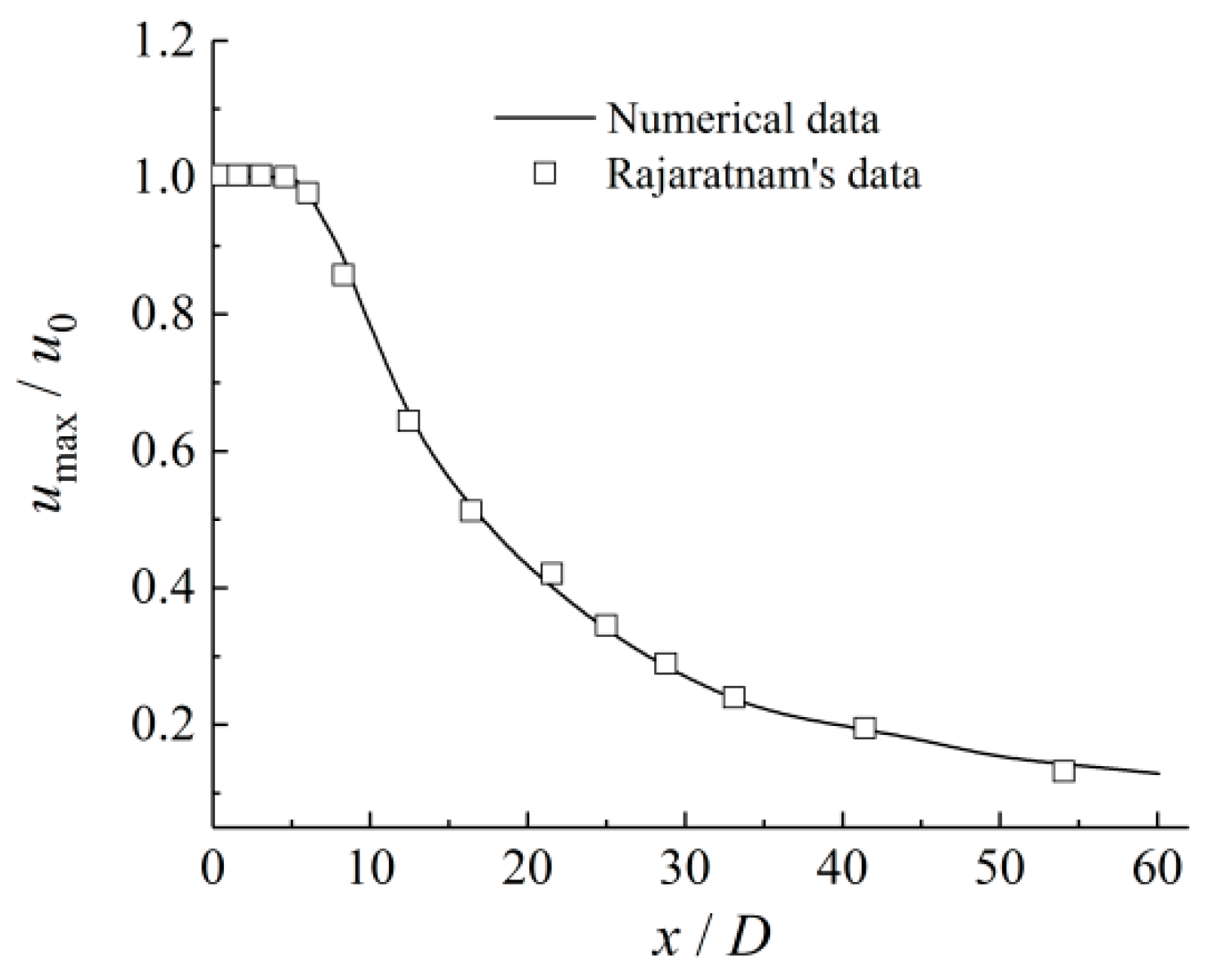
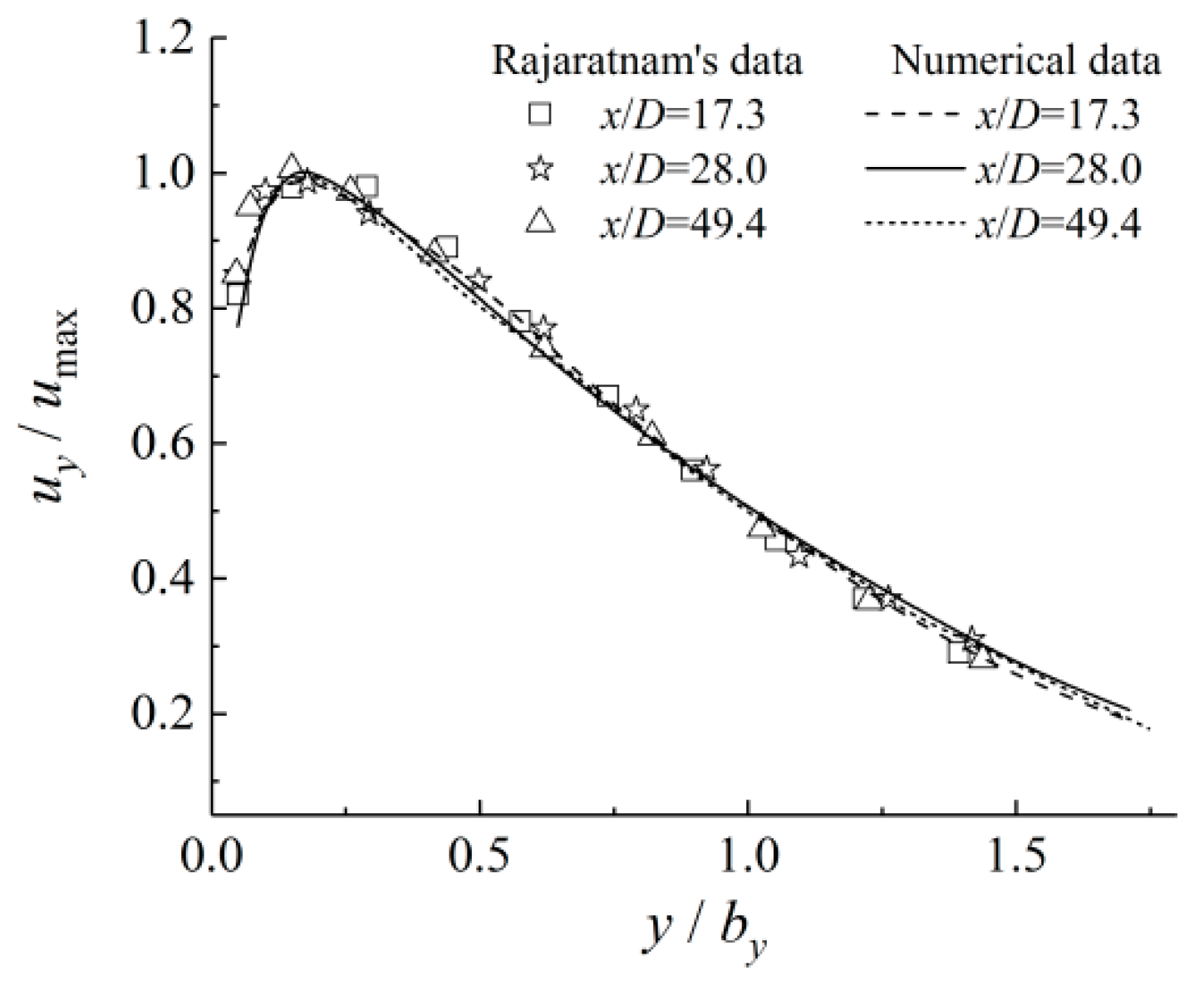
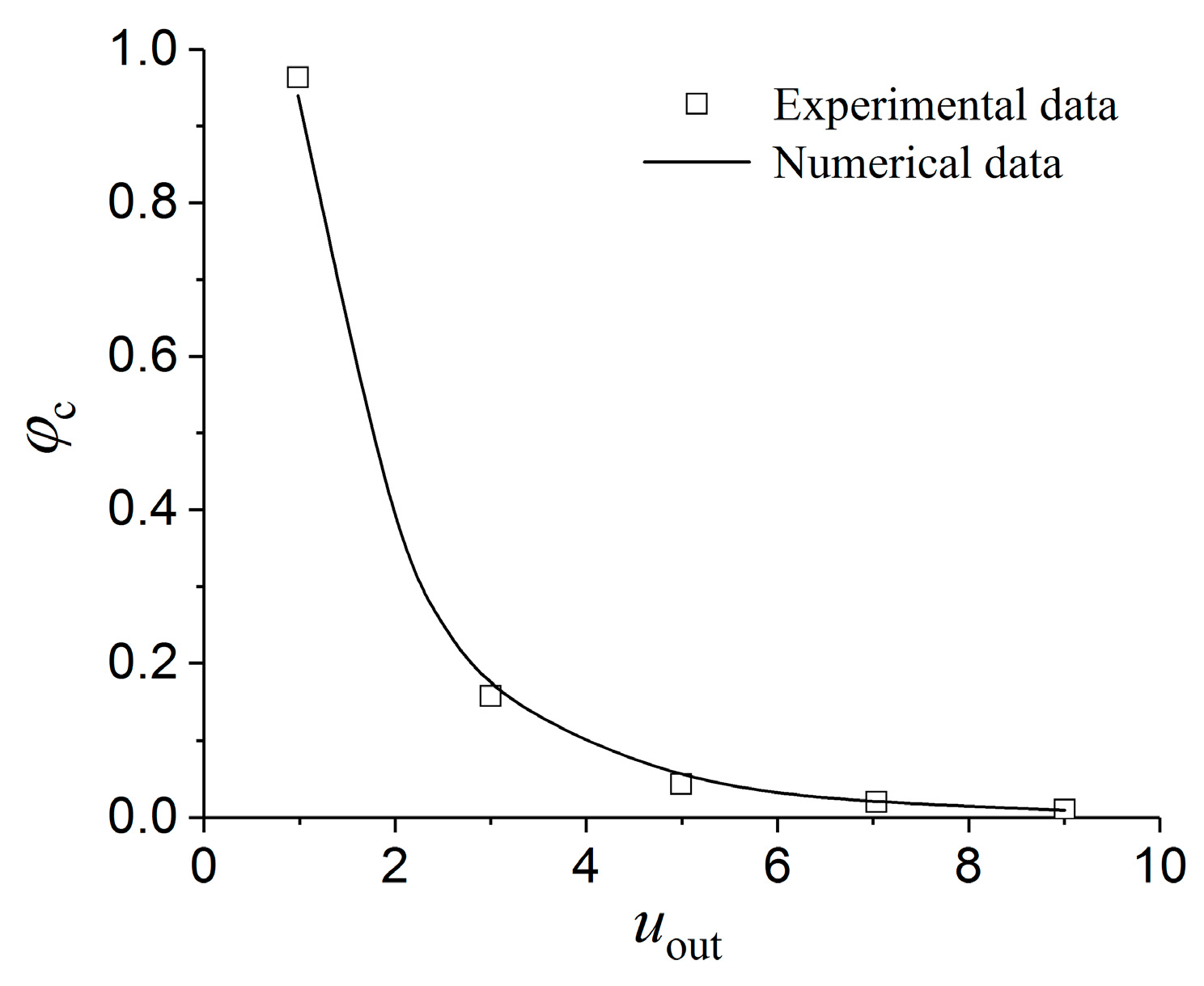
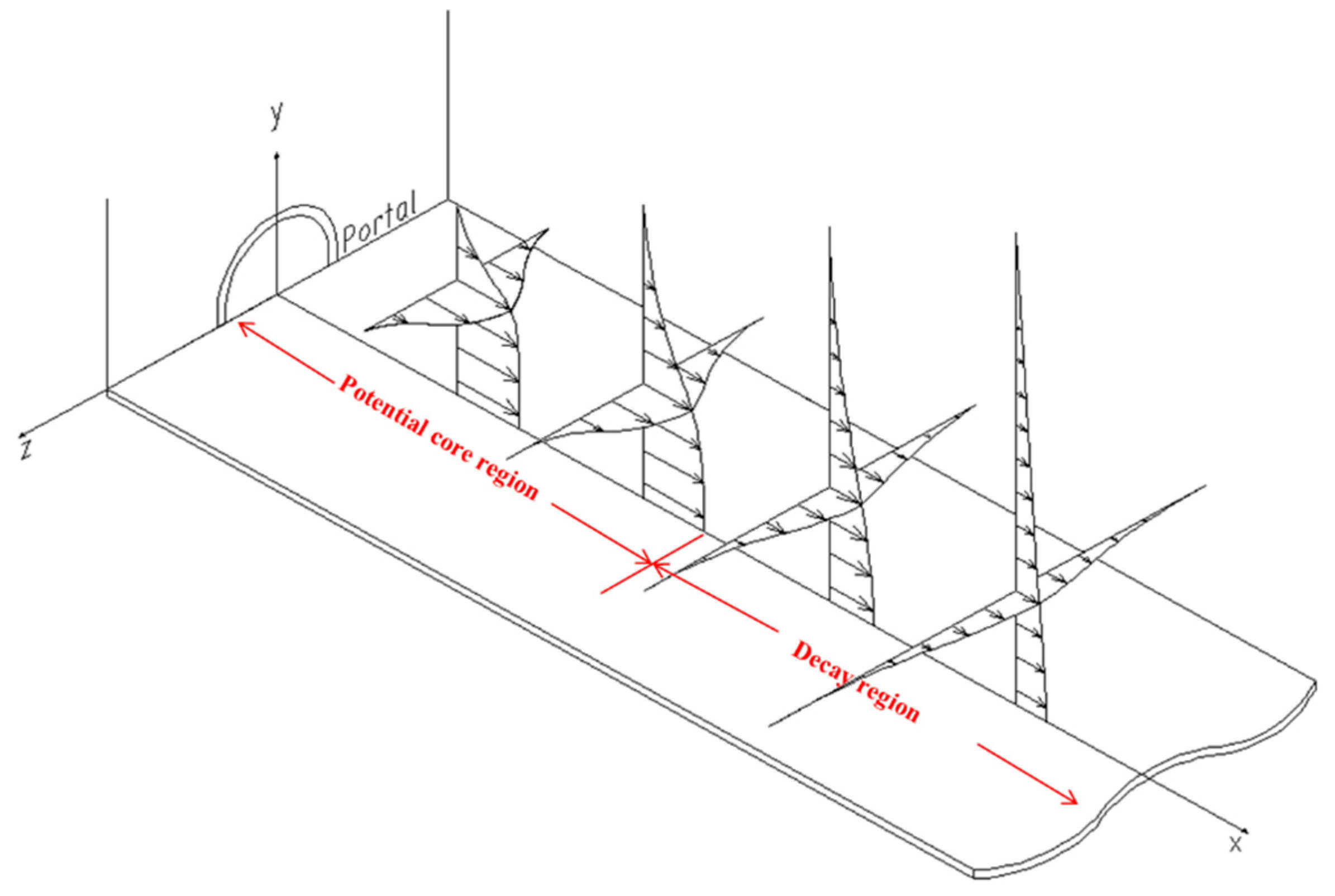
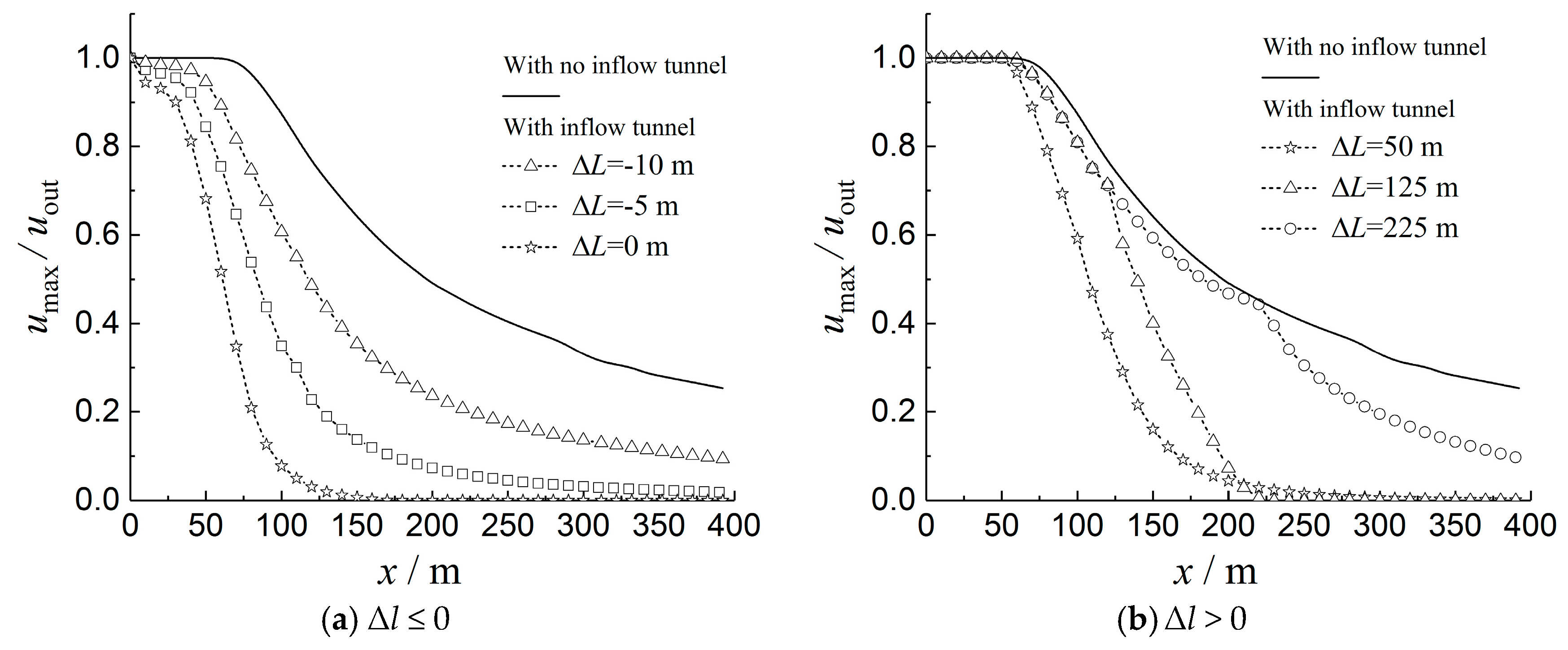
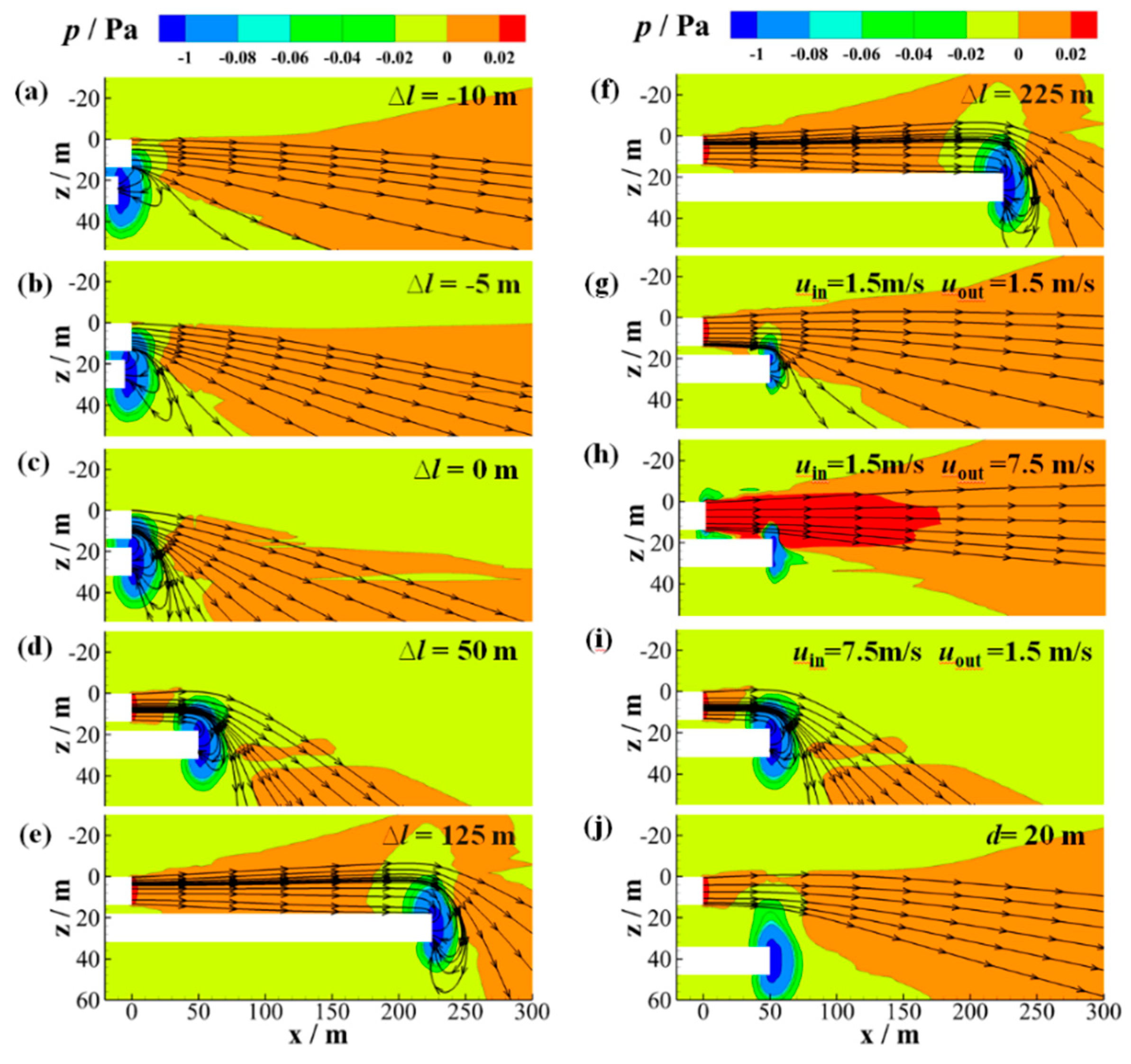
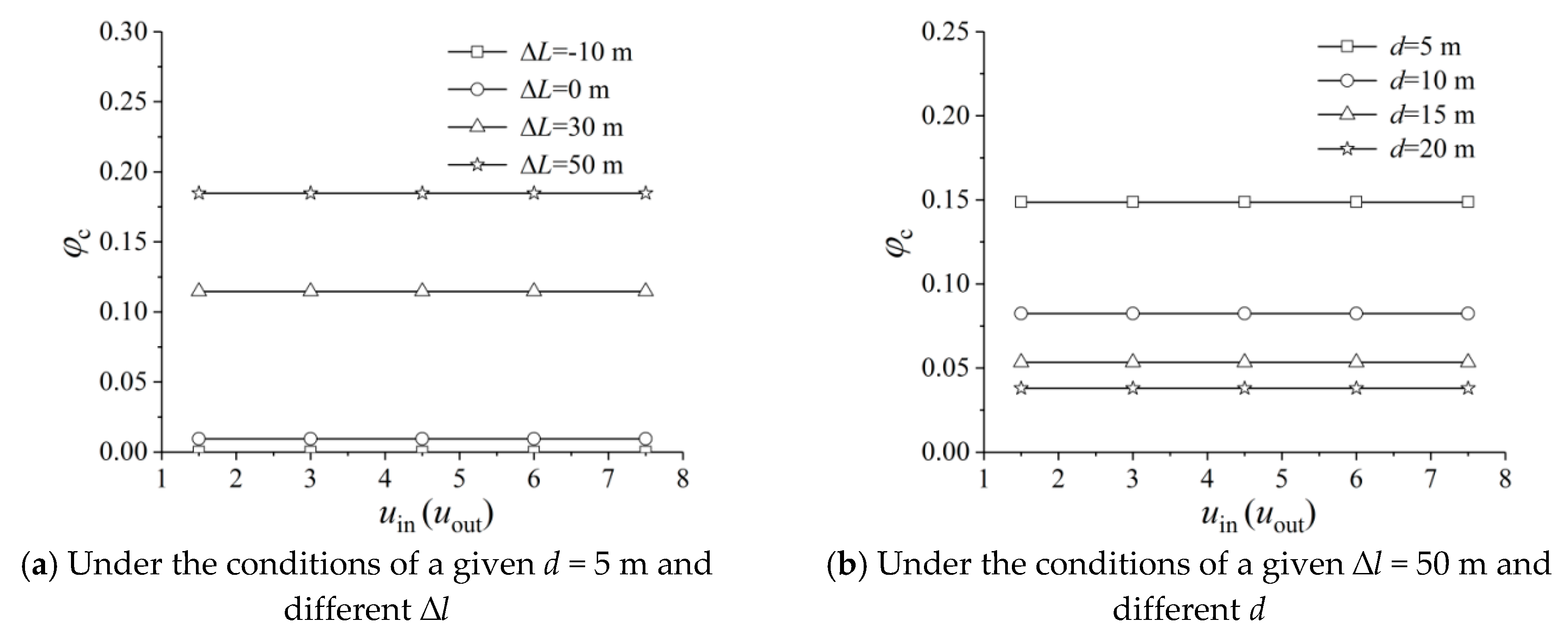
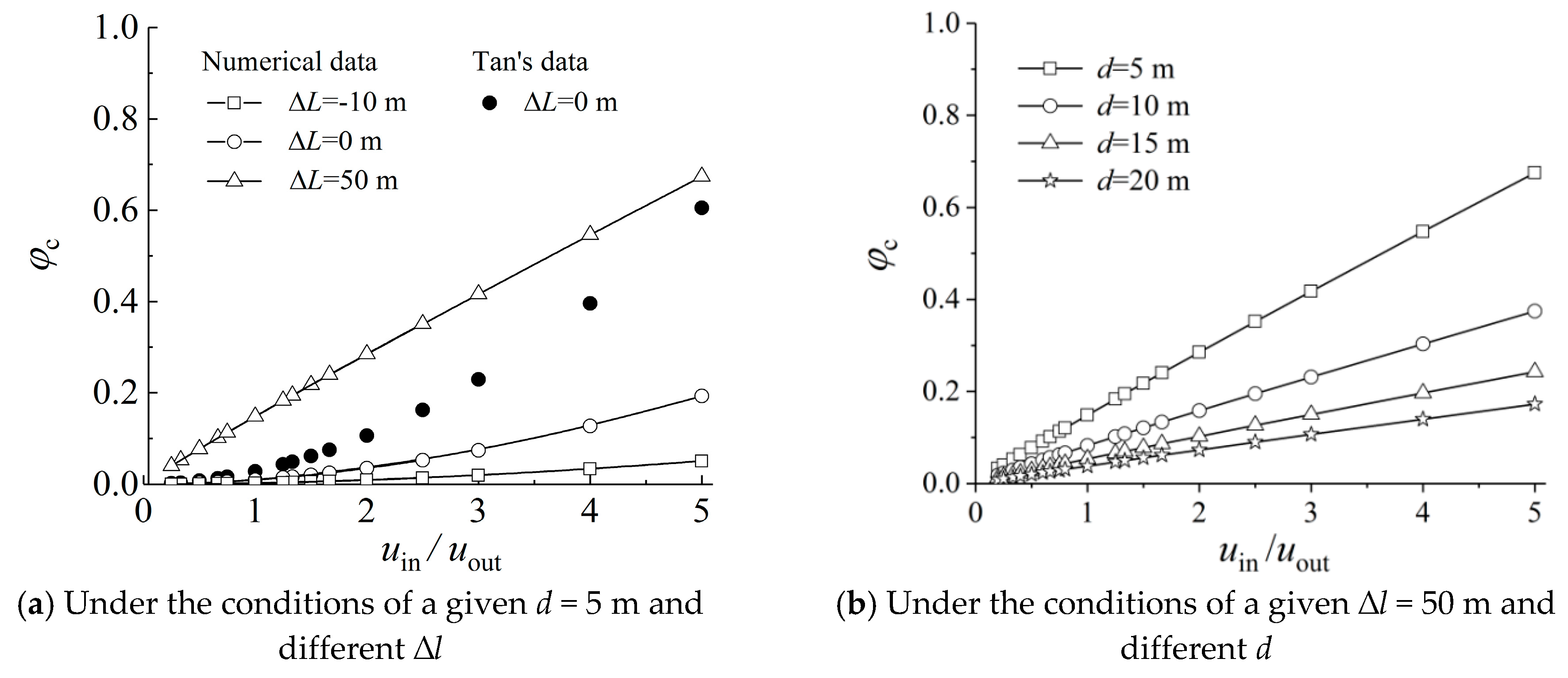



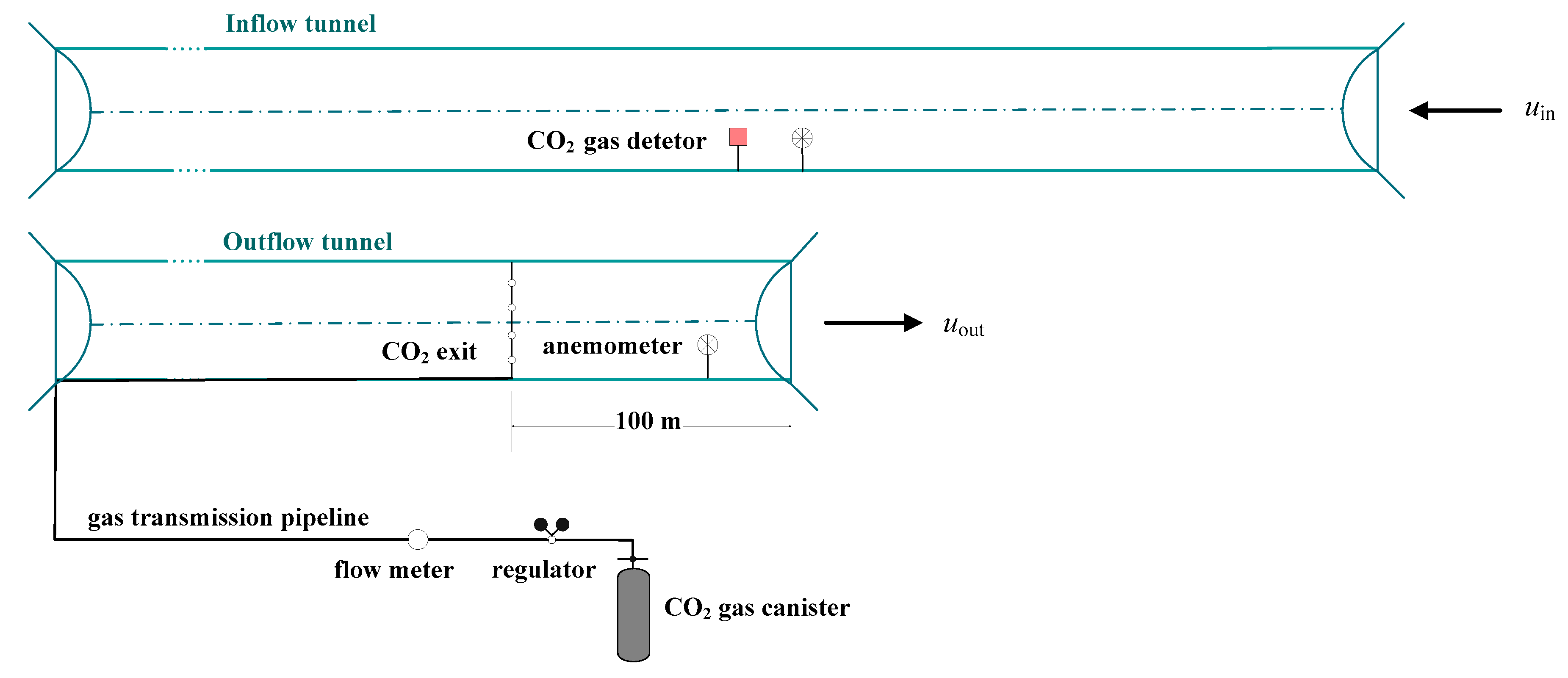
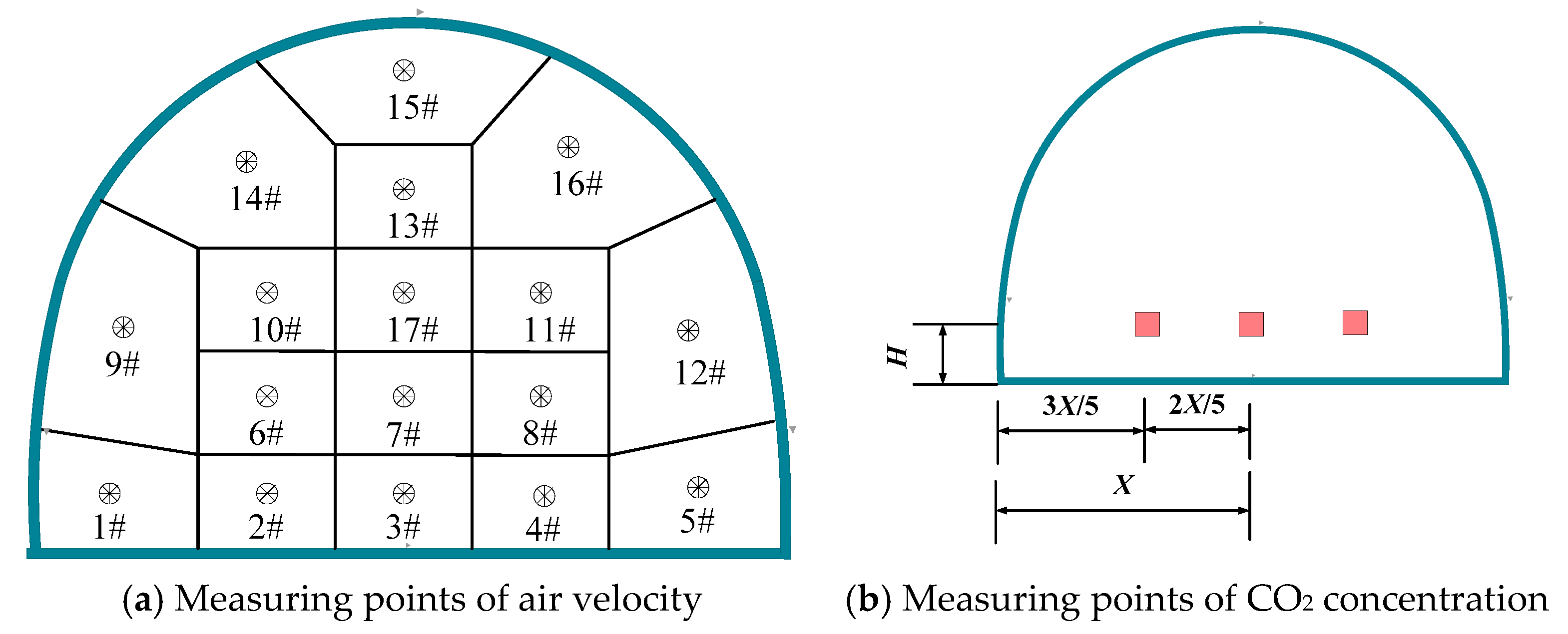
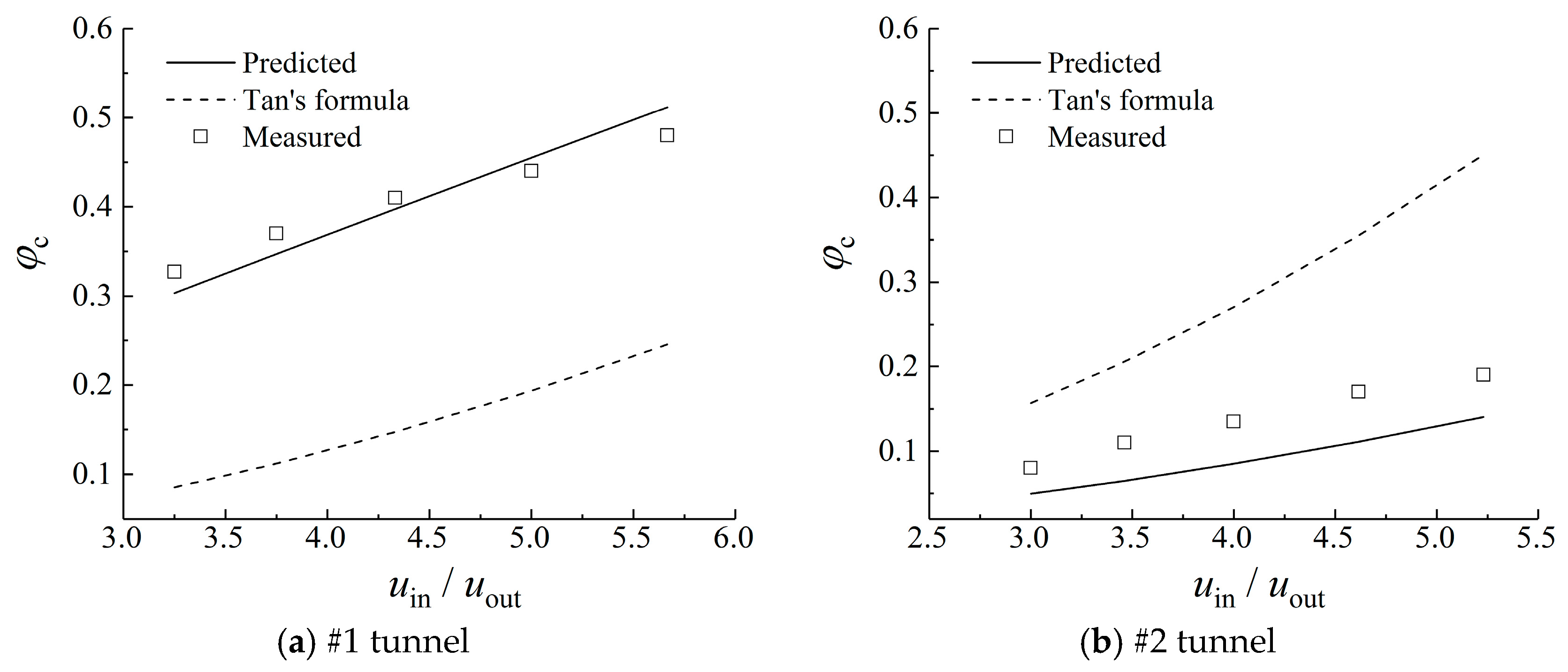
| No. | Length L/m | Cross-Sectional Area A/m2 | D/m | d/m | Δl/m | Front Slope of Tunnel Portal/° |
|---|---|---|---|---|---|---|
| #1 | 3875 | 54.3 | 7.6 | 8 | 43 | 15° |
| #2 | 3580 | 67.3 | 8.4 | 6 | 0 | 20° |
© 2018 by the authors. Licensee MDPI, Basel, Switzerland. This article is an open access article distributed under the terms and conditions of the Creative Commons Attribution (CC BY) license (http://creativecommons.org/licenses/by/4.0/).
Share and Cite
Zhang, X.; Zhang, T.; Zhu, K.; Huang, Z.; Wu, K. Numerical Research on the Mixture Mechanism of Polluted and Fresh Air at the Staggered Tunnel Portals. Appl. Sci. 2018, 8, 1365. https://doi.org/10.3390/app8081365
Zhang X, Zhang T, Zhu K, Huang Z, Wu K. Numerical Research on the Mixture Mechanism of Polluted and Fresh Air at the Staggered Tunnel Portals. Applied Sciences. 2018; 8(8):1365. https://doi.org/10.3390/app8081365
Chicago/Turabian StyleZhang, Xin, Tianhang Zhang, Kai Zhu, Zhiyi Huang, and Ke Wu. 2018. "Numerical Research on the Mixture Mechanism of Polluted and Fresh Air at the Staggered Tunnel Portals" Applied Sciences 8, no. 8: 1365. https://doi.org/10.3390/app8081365




